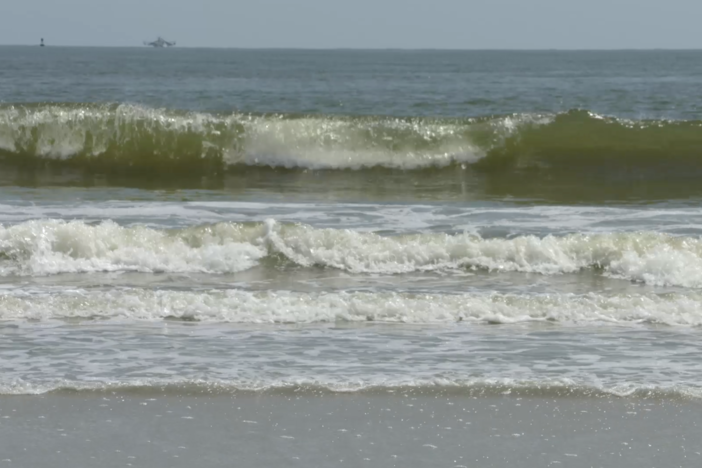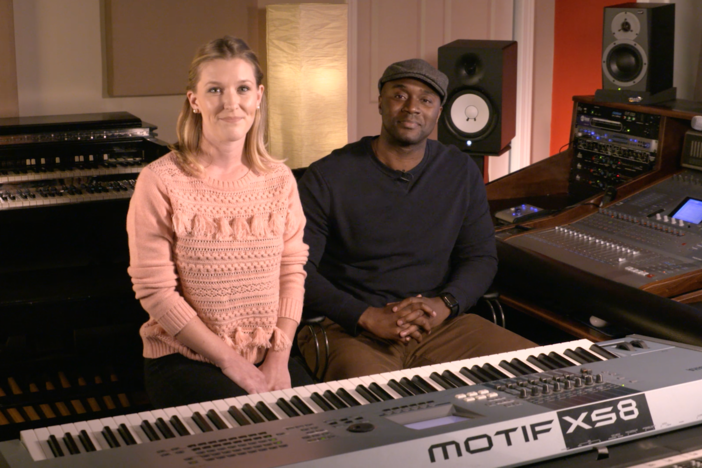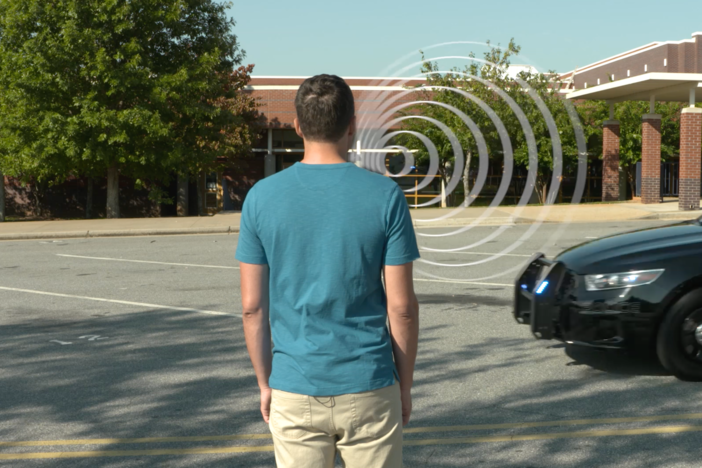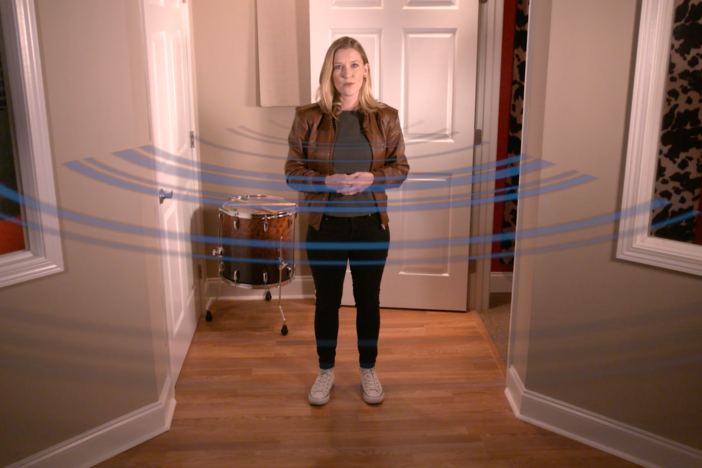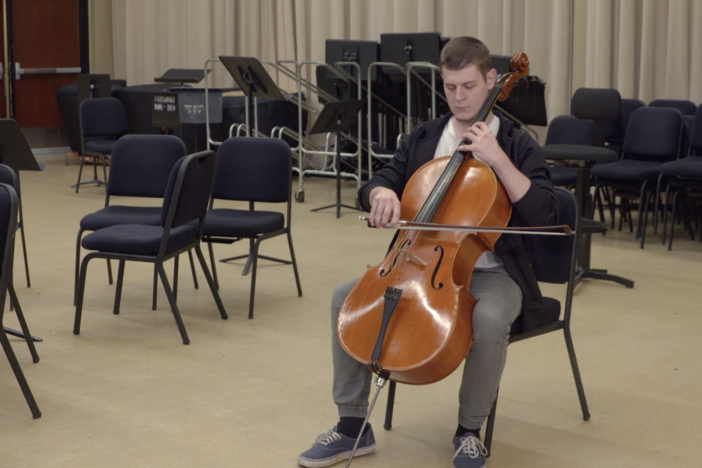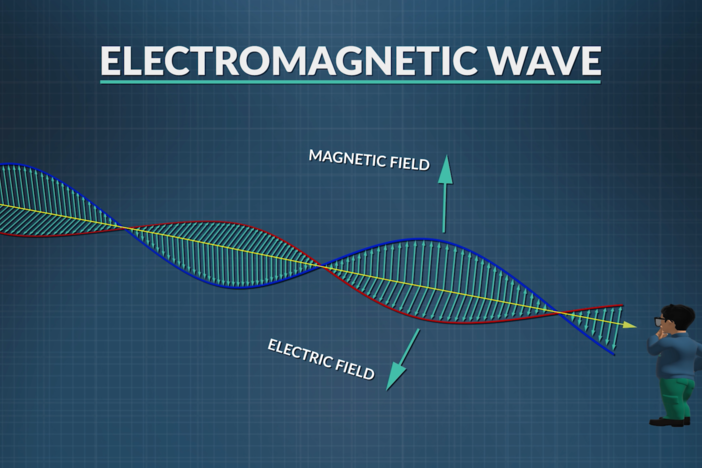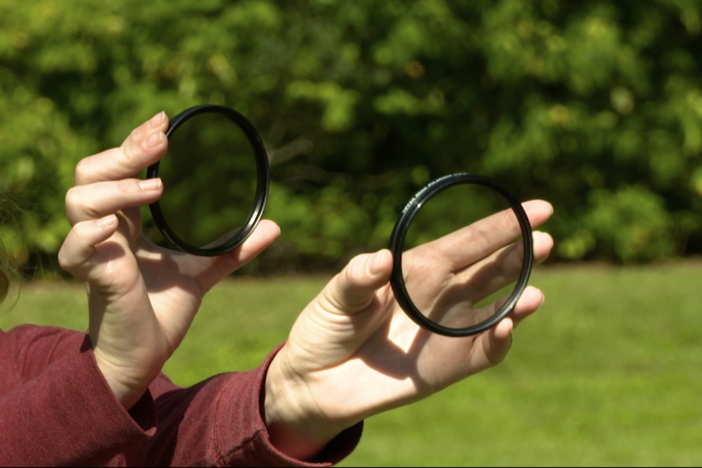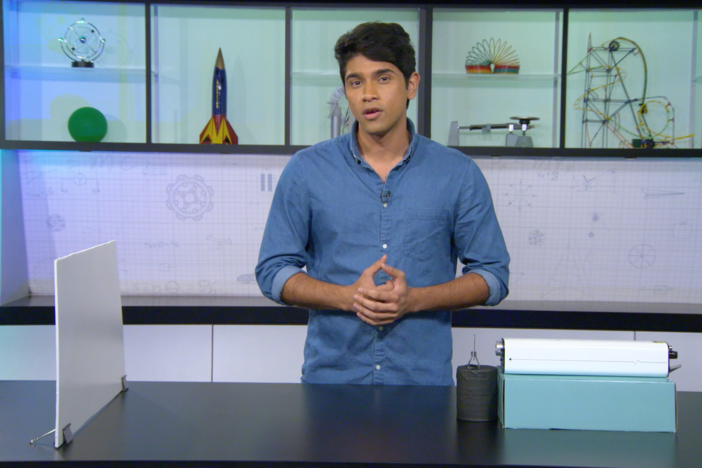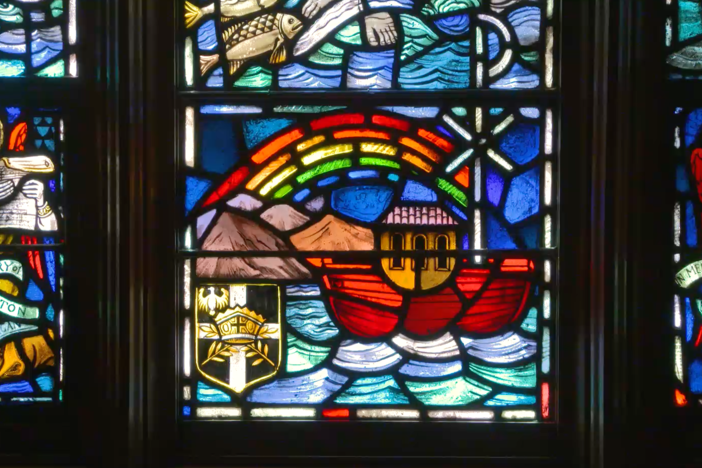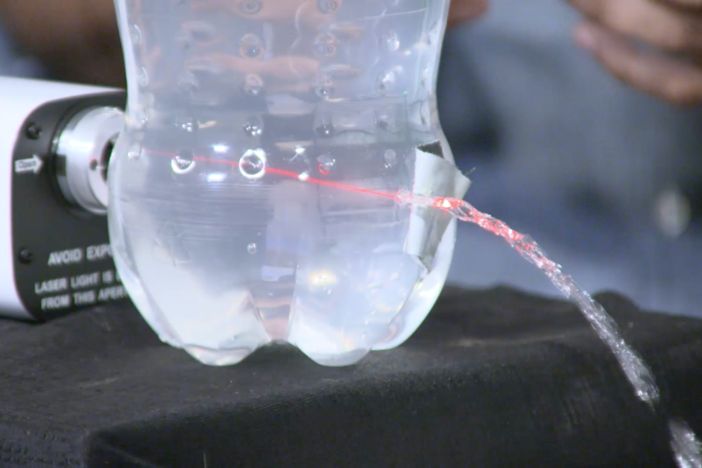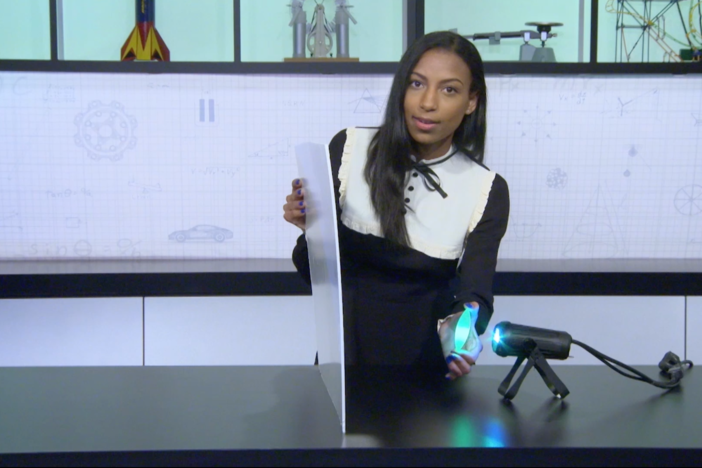Segment A: The Nature of Waves
Properties of waves are introduced as we explore the wave velocity equation by finding the frequency and wavelength of different types of waves. Simple harmonic motion is introduced with a discussion of spring force and spring potential energy and how that motion relates to waves.
Segment A: The Nature of Waves
Properties of waves are introduced as we explore the wave velocity equation by finding the frequency and wavelength of different types of waves. Simple harmonic motion is introduced with a discussion of spring force and spring potential energy and how that motion relates to waves.
Science
Obtain, evaluate, and communicate information about the properties and applications of waves.
Develop and use mathematical models to explain mechanical and electromagnetic waves as a propagating disturbance that transfers energy.
Construct an argument that analyzes the production and characteristics of sounds waves.
Plan and carry out investigations to characterize the properties and behavior of electromagnetic waves.
Obtain, evaluate, and communicate information to explain the properties of waves.
Analyze and interpret data to identify the relationships among wavelength, frequency, and energy in electromagnetic waves and amplitude and energy in mechanical waves.
Ask questions to compare and contrast the characteristics of electromagnetic and mechanical waves.
Develop models based on experimental evidence that illustrate the phenomena of reflection, refraction, interference, and diffraction.
Analyze and interpret data to explain how different media affect the speed of sound and light waves.
Obtain, evaluate, and communicate information to support the claim that electromagnetic (light) waves behave differently than mechanical (sound) waves.
Ask questions to develop explanations about the similarities and differences between electromagnetic and mechanical waves.
Construct an explanation using data to illustrate the relationship between the electromagnetic spectrum and energy.
Design a device to illustrate practical applications of the electromagnetic spectrum (e.g., communication, medical, military).
Develop and use a model to compare and contrast how light and sound waves are reflected, refracted, absorbed, diffracted or transmitted through various materials.
Analyze and interpret data to predict patterns in the relationship between density of media and wave behavior (i.e., speed).
Develop and use a model (e.g., simulations, graphs, illustrations) to predict and describe the relationships between wave properties (e.g., frequency, amplitude, and wavelength) and energy.
Develop and use models to demonstrate the effects that lenses have on light (i.e., formation an image) and their possible technological applications.
-Compare and contrast the properties of transverse waves and longitudinal waves.
-Understand simple harmonic motion and how it relates to spring potential energy and use the spring constant successfully in calculations.
-Explain how simple harmonic motion and wave motion are related.
-Compare and contrast equilibrium position, period, amplitude, wavelength, and frequency conceptually and mathematically for a pendulum and a spring.
amplitude - the distance from the equilibrium position to the maximum or minimum intensity of a wave.
electromagnetic wave - oscillating electric and magnetic fields that need no physical medium through which to travel.
frequency (f) - the number of wavelengths that pass a given point per second; SI unit is the Hertz (Hz).
harmonic motion - the repetition of a wave with a constant frequency.
longitudinal wave - a wave that vibrates in the direction of propagation (e.g. sound waves).
mechanical wave - a wave requiring a physical medium through which to travel.
period (T) - the time it takes for one wave cycle to occur; SI unit is seconds (s).
spring constant (k) - a characteristic of a spring that is equal to the force exerted on it divided by the displacement the spring stretches; the unit is Newton/meter (N/m).
spring force (FS) - this force is equal to the spring constant, k, for a given spring multiplied by the displacement the spring is stretched from the equilibrium position, x.
spring potential energy (PES) - the amount of stored energy in a spring and is equal to one half times the spring constant, k, times the displacement the spring is stretched from the equilibrium position, x, squared.
transverse wave - a wave that vibrates perpendicular to the direction of propagation (e.g. electromagnetic waves).
wavelength (λ) - The distance between two waves that includes on full compression and one full rarefaction of a sound wave or one full crest and one full trough of an electromagnetic wave; SI unit is meters (m).
The Physics in Motion teacher toolkit provides instructions and answer keys for study questions, practice problems, labs for all seven units of study. GPB offers the teacher toolkit at no cost to Georgia educators.To order your teacher toolkit, complete and submit this form to request the teacher toolkit. You only need to submit this form one time to get materials for all seven units.
